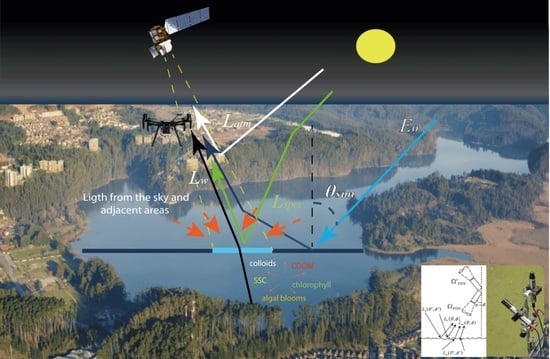Spatiotemporal Variations in Biophysical Water Quality Parameters: An Integrated In Situ and Remote Sensing Analysis of an Urban Lake in Chile
Abstract
Correction Statement
Share and Cite
Yépez, S.; Velásquez, G.; Torres, D.; Saavedra-Passache, R.; Pincheira, M.; Cid, H.; Rodríguez-López, L.; Contreras, A.; Frappart, F.; Cristóbal, J.; et al. Spatiotemporal Variations in Biophysical Water Quality Parameters: An Integrated In Situ and Remote Sensing Analysis of an Urban Lake in Chile. Remote Sens. 2024, 16, 427. https://doi.org/10.3390/rs16020427
Yépez S, Velásquez G, Torres D, Saavedra-Passache R, Pincheira M, Cid H, Rodríguez-López L, Contreras A, Frappart F, Cristóbal J, et al. Spatiotemporal Variations in Biophysical Water Quality Parameters: An Integrated In Situ and Remote Sensing Analysis of an Urban Lake in Chile. Remote Sensing. 2024; 16(2):427. https://doi.org/10.3390/rs16020427
Chicago/Turabian StyleYépez, Santiago, Germán Velásquez, Daniel Torres, Rodrigo Saavedra-Passache, Martin Pincheira, Hayleen Cid, Lien Rodríguez-López, Angela Contreras, Frédéric Frappart, Jordi Cristóbal, and et al. 2024. "Spatiotemporal Variations in Biophysical Water Quality Parameters: An Integrated In Situ and Remote Sensing Analysis of an Urban Lake in Chile" Remote Sensing 16, no. 2: 427. https://doi.org/10.3390/rs16020427
APA StyleYépez, S., Velásquez, G., Torres, D., Saavedra-Passache, R., Pincheira, M., Cid, H., Rodríguez-López, L., Contreras, A., Frappart, F., Cristóbal, J., Pons, X., Flores, N., & Bourrel, L. (2024). Spatiotemporal Variations in Biophysical Water Quality Parameters: An Integrated In Situ and Remote Sensing Analysis of an Urban Lake in Chile. Remote Sensing, 16(2), 427. https://doi.org/10.3390/rs16020427










